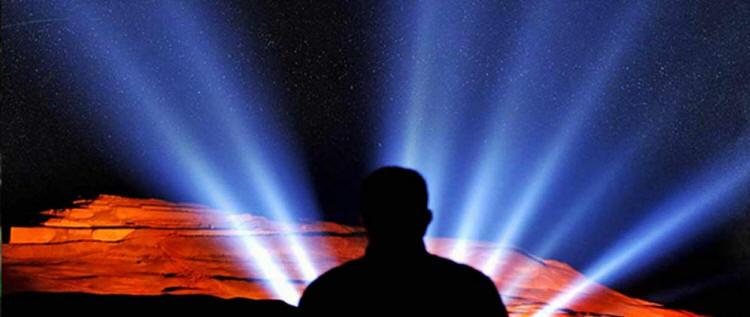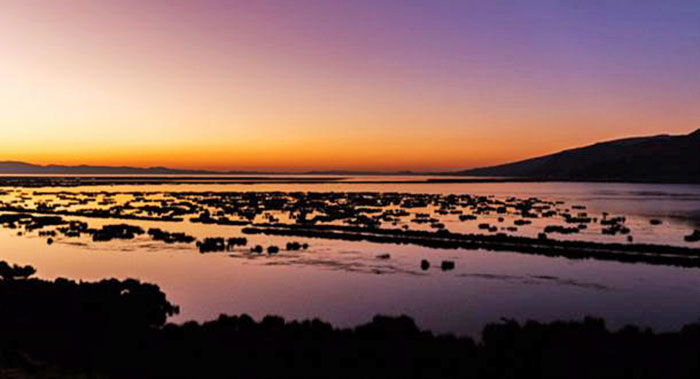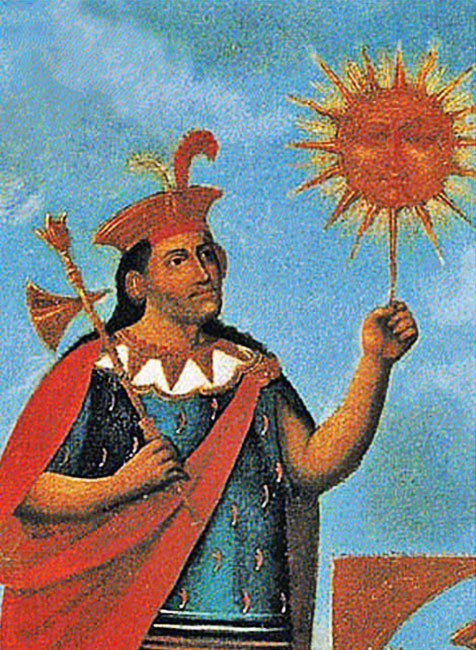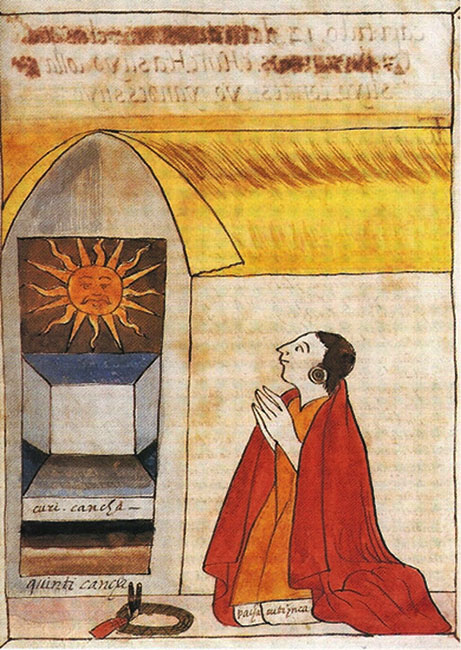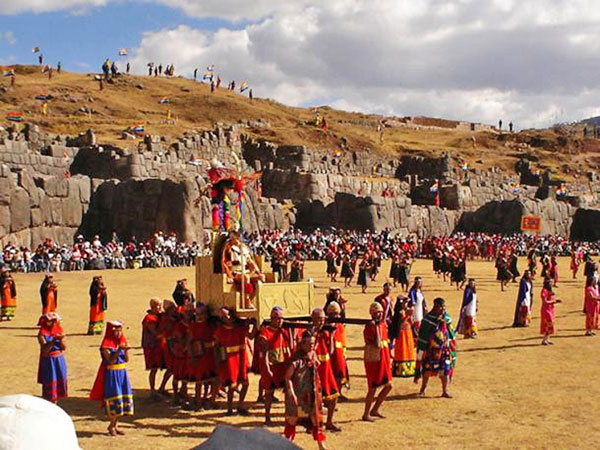|
by Ashley Cowie May 10, 2017 from Ancient-Origins Website
The Inca civilization
later dominated the Peruvian Andes between the 13th and 16th century
and inherited
Tiwanaku cosmology, religion and traditions.
(Diego Delso, delso.photo/CC BY-SA 4.0)
Most often described as an old man with fair-skin and a beard, wearing a long robe and carrying a staff and a book, after crafting the sun, moon, planets and stars from islands on Lake Titicaca he,
Viracocha then used clay and
successfully forged the first man, Manco Capac (meaning: splendid
foundation) the son of Inti the son god, and his sister Mama Uqllu,
which means "mother fertility".
Manco Capac, detail of ‘Genealogy of the Incas'
(Public Domain)
Depiction of Inca emperor Pachacuti worshipping Inti in the Coricancha
(Public Domain)
Nine generations after Manco Capac founded Cusco with his golden staff, chronicler Garcilaso de la Vega tells us the 9th Inca ruler Sapa Inca Pachacuti created the Inti Raymi (Quechua for "sun festival") to celebrate the winter solstice, the shortest day of the year, and new year in the Andes of the Southern Hemisphere.
The Inti
Raymi honored the sun god Inti, one of the most venerated deities in
Inca religion, and the ceremony also honored the special day upon
which Viracocha created Manco Inca, the father of the royal Inca
bloodline.
Inti Raymi (Festival of the Sun) at Sacsayhuaman, Cusco
(Cyntia Motta/CC
BY-SA 3.0)
In Peru, the June solstice sun rises at 65° east of north and sets at 295° north west.
Local variations to these
astronomical angles were made to account for differing altitudes and
obstructions on the horizon.
This radial matrix of alignments was pinned onto the landscape with sacred sites called huacas.
Perceived as flowing with male and female creation energy,
the ceque lines not only united the spiritual focus of a nation but
they also served as an accurate calendrical and time device, and the
knowledge of how to use or read such a semi-mythical machine was
highly-guarded by the high priests of
the Coricancha.
The Inca's
Solar-Earth Empire
The sunlight and the resulting shadows observed at the solstice
sunrise were highly spiritualized, and to fulfill their full sacred
potential they were extended across landscapes by teams of
specialist astronomer-priests, highly-trained in the sacred crafts
of measuring time and distance...
|


